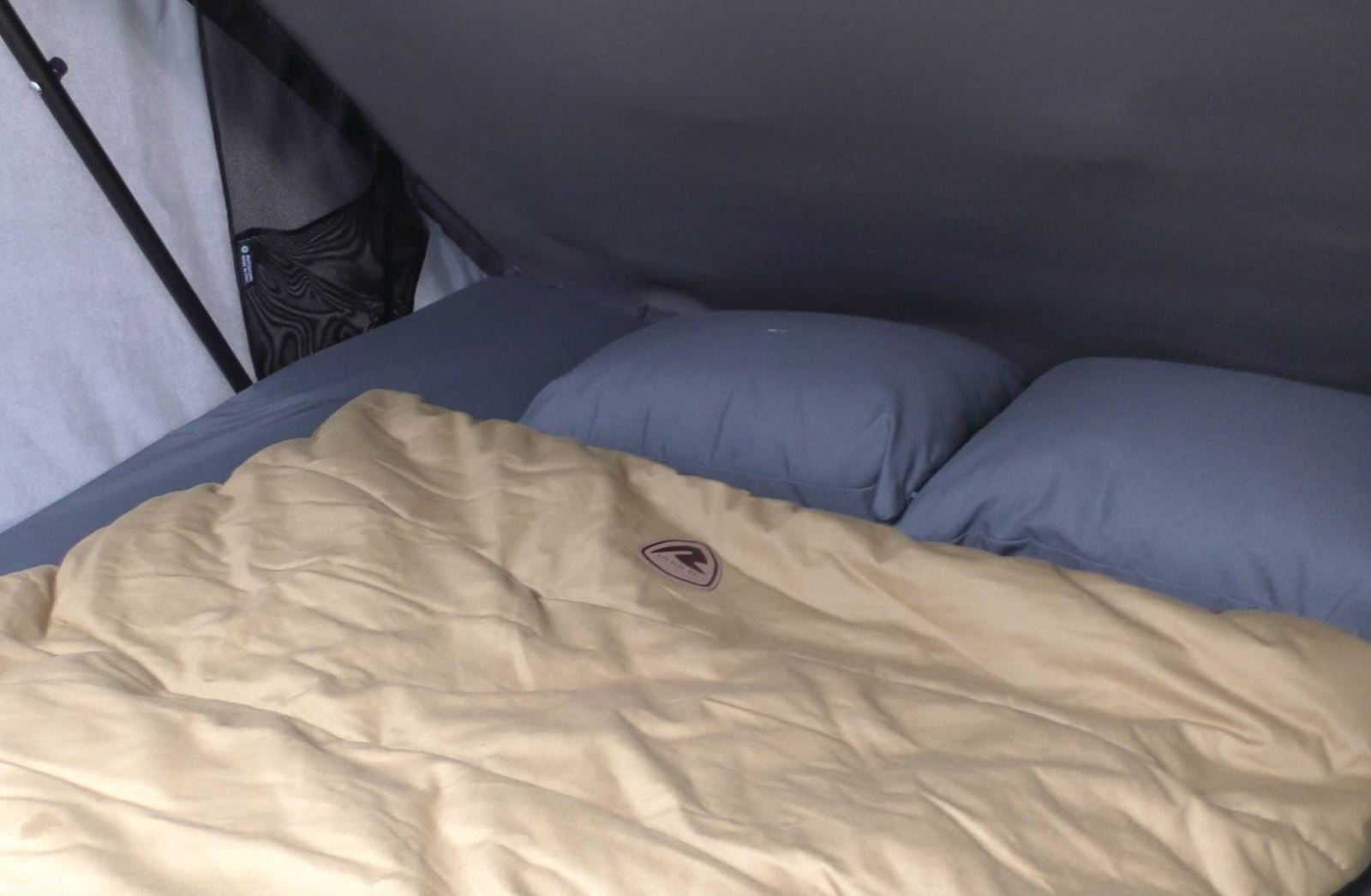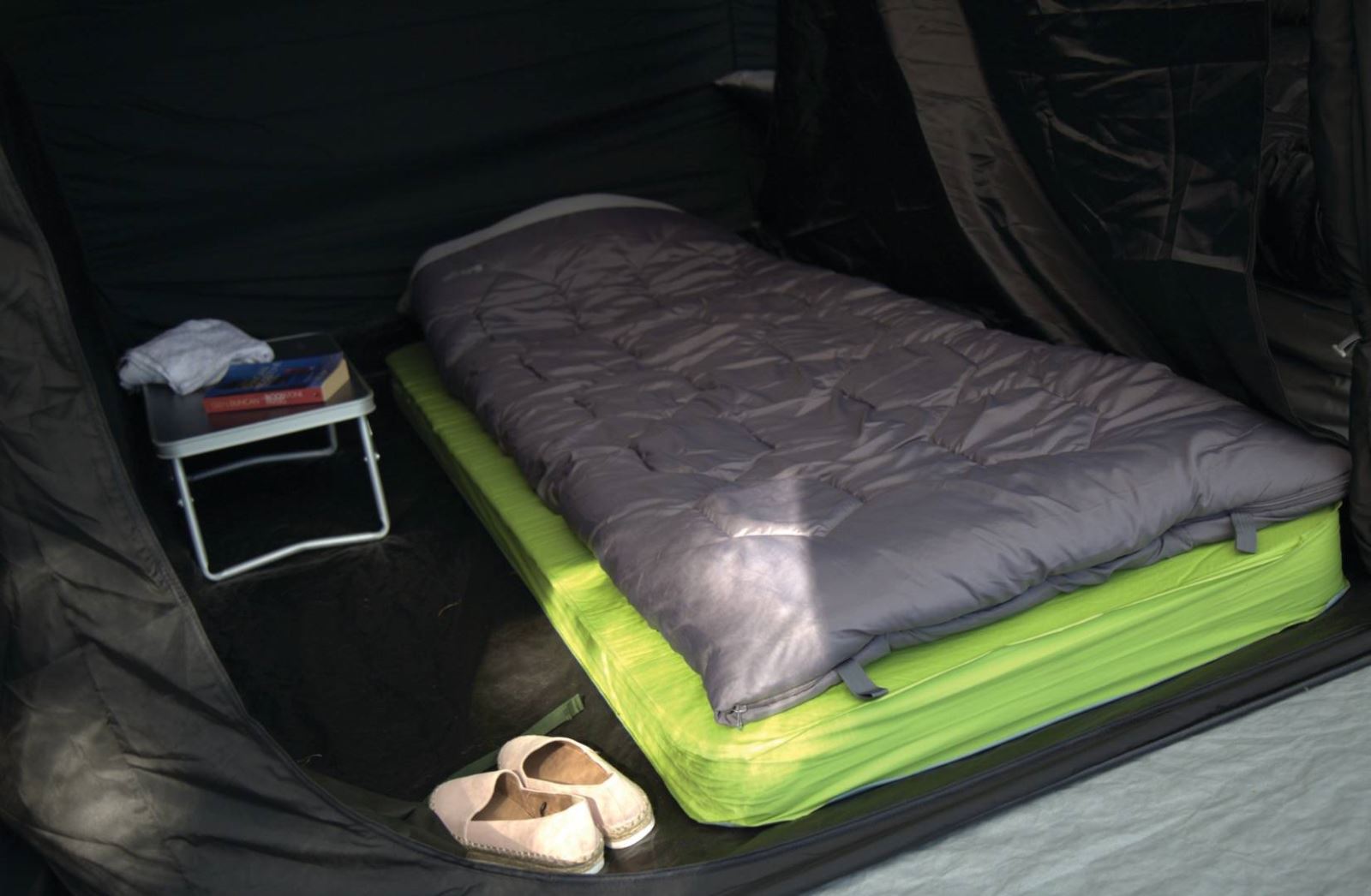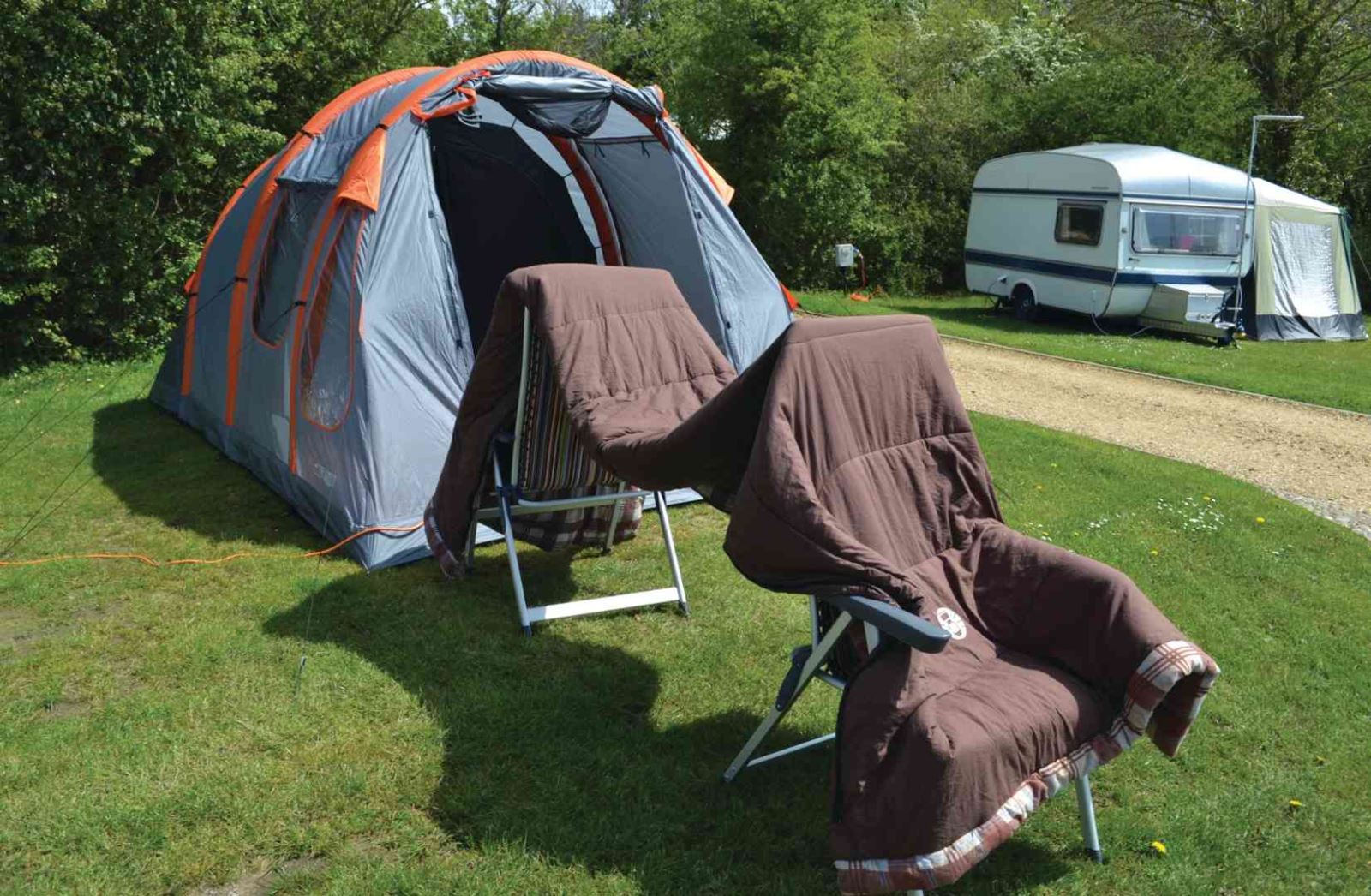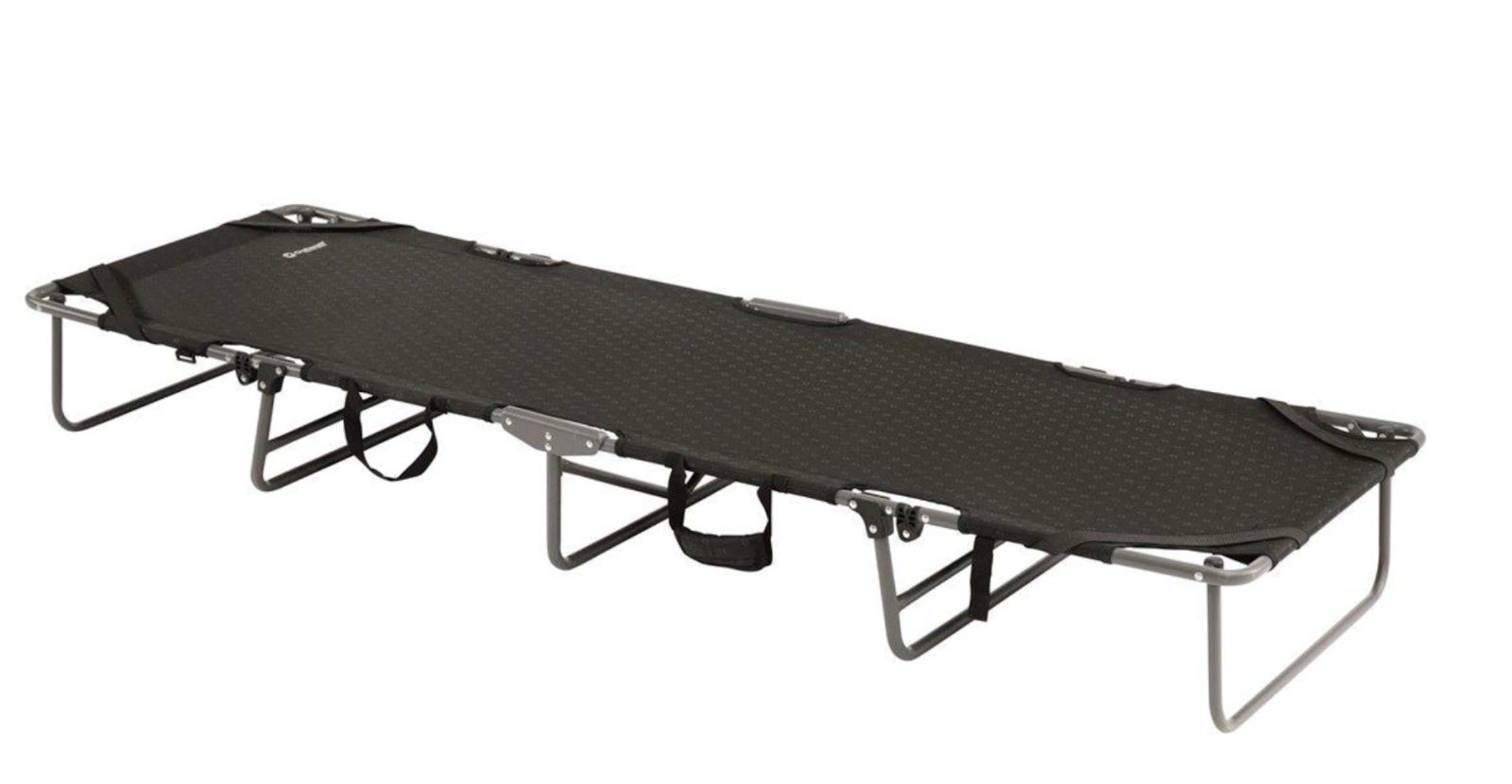Camping sleeping bags and beds: a complete guide
When it comes to camping, there's one essential item that can make or break your outdoor adventure: the sleeping bag. Alongside sleeping mats and beds, these items are crucial for ensuring a good night's sleep in your tent
In this comprehensive guide, we'll explore everything you need to know about camping sleeping bags and beds, answering common questions and helping you make the right choices for your camping needs.
Page contents
- Types of sleeping bags
- Insulation and materials
- Design features to look for
- Sleeping bag liners
- Tips for sleeping bag care and cleaning
- How to pack a sleeping bag away
- Camping bed options
- Final thoughts
- About our magazines
Words by Iain Duff
Types of sleeping bags

(Photo by Iain Duff)
Rectangular single and double
Rectangular sleeping bags are versatile and ideal for family camping when weight and bulk aren't a concern. These bags, also known as square or envelope-shaped, come in single, XL, and double sizes.
They offer plenty of room to move around, with a wider design at the shoulders that extends down to the feet. However, they tend to be bulkier and heavier due to their nylon filling and shell materials.
Mummy
Mummy sleeping bags follow the natural shape of your body, offering more efficient warmth retention. They are wider at the top to accommodate your shoulders and taper towards the feet, resembling a mummy's shape.
While they provide superior warmth, some campers may find them claustrophobic, so it's essential to try one before making a purchase.
Sleeping bags for children
Specialised sleeping bags for children are designed to keep young campers cosy during their outdoor adventures.
These bags are usually smaller in size to fit a child's frame comfortably and come in various designs and insulation options.
Insulation and materials
Sleeping bags are filled with either synthetic fibres or natural goose/duck down for insulation.
Synthetic fill is known for its resilience and loft when treated with silicone, while down bags offer an excellent warmth-to-weight ratio. Down bags are lightweight and compressible but require special care to keep them dry.
Warmth rating

(Photo by Iain Duff)
Understanding the warmth rating of a sleeping bag is crucial for staying comfortable during your camping trips. EU-standard EN 13537 ratings help you assess a bag's performance in different temperature conditions, providing clear information about its temperature limits:
- Upper limit or maximum temperature: The highest temperature at which an average adult male can sleep comfortably without excessive sweating.
- Comfort rating: Based on the temperature at which a standard adult woman can sleep comfortably.
- Lower limit: The lowest temperature at which a standard adult male can sleep comfortably.
- Extreme rating: A survival-only rating for a standard adult woman.
- Seasonal ratings: This offers a rough guide to sleeping bag warmth for different seasons, from one season (summer) to three-four seasons (year-round use).
Keep in mind that personal factors like gender, weight, and fitness can influence your perception of warmth, so choose a bag that suits your individual needs.
Design features to look for
When selecting a sleeping bag, consider these important design features:
- Draft collar: An insulated tube at the base of the hood that prevents heat loss from around the neck and shoulders.
- Hood: A well-fitting hood can significantly improve insulation since about half of your body's heat can be lost through your head.
- Zips: Ensure zips run smoothly without catching on fabric and choose the side (left or right) that suits your preference.
- Zip baffles: These insulated flaps prevent heat loss along the zipper, enhancing overall warmth.
Sleeping bag liners
Cotton, silk, or fleece liners can keep your sleeping bag clean and add extra comfort. Cotton is popular, silk is lightweight and dries quickly, and fleece offers warmth. Liners reduce the need for frequent washing and help maintain loft.
Tips for sleeping bag care and cleaning

(Photo by Iain Duff)
Proper care is essential to prolong the life of your sleeping bag. Here's how to clean synthetic-filled and down-filled sleeping bags:
Washing synthetic-filled sleeping bags
- Follow the manufacturer's instructions.
- Clean visible stains before washing.
- Zip the bag closed.
- Use your regular washing powder and fabric conditioner.
- Rinse thoroughly.
- Avoid wringing the bag.
- Dry outdoors or tumble dry at low heat.
- Store loosely in a large mesh bag to maintain loft.
Washing down-filled sleeping bags
- Use a pure soap product or specialist outdoor washing solution.
- Fill a bath with warm water and soap, submerge the bag, and gently work the soap through it.
- Rinse thoroughly.
- Squeeze out excess water by rolling the bag.
- Rinse again until all soap is removed.
- Drip dry or use a tumble dryer on low heat.
- Store loosely in a mesh bag.
How to pack a sleeping bag away
Properly packing your sleeping bag is essential for easy storage and transport:
- Unroll the bag and slacken off compression straps.
- Roll up the bag, starting at the foot and working toward the mouth of the stuff sack.
- Pull the drawstring tight while pushing down into the sack.
- Use compression straps to secure it.
- For long-term storage, store sleeping bags loosely in large mesh or cotton bags to maintain loft.
Camping bed options

(Photo courtesy of Outwell)
In addition to sleeping bags, camping beds play a crucial role in ensuring a comfortable night's sleep. Here are some popular options:
Roll-out sleeping mats
- Basic and affordable.
- Ideal for short trips and festivalgoers.
- Thin and not very comfortable but offer insulation from the ground.
Self-inflating mats (SIMs)
- Comfortable and easy to set up.
- Available in various thicknesses.
- Require minimal effort to inflate.
- Suitable for family campers and those who prioritise comfort.
- Can be very bulky, especially the thicker models, and take up a lot of space in your car. They are also more expensive than basic sleeping mats.
Airbeds
- Provide luxurious comfort.
- Quick and easy inflation/deflation.
- Less effective in cold temperatures as the air inside can get cold and this will transfer to your body.
- Tend to be less stable than SIMs, especially doubles. If one person moves during the night, it can cause the whole mattress to shift.
- Ideal for home use when guests stay over.
Folding camp beds
- Elevate you off the ground for convenience.
- Offer storage space underneath.
- Suitable for campers with mobility issues or those who prefer not to sleep on the floor.
Choosing the right camping bed depends on your budget, the type of camping you do, and your personal preferences.
FAQs
What tog sleeping bag for a baby?
For babies, consider a lightweight sleeping bag with a tog rating of around 2.5 in moderate room temperatures. Adjust the tog rating based on room temperature.
How to attach a sleeping bag to a backpack?
Most sleeping bags come with a stuff sack or compression sack. Roll up your sleeping bag, place it in the sack, and use the drawstrings or straps to secure it to your backpack.
Is it OK to sleep in a sleeping bag every night?
While it's fine for occasional use, sleeping in a sleeping bag every night for an extended period may not be ideal. It's essential to maintain proper bedding and hygiene for long-term comfort and health.
Is it better to roll or stuff a sleeping bag?
Stuffing your sleeping bag loosely into its stuff sack is generally recommended for convenience and preserving loft.
Final thoughts
A comfortable sleeping bag and the right camping bed can make all the difference during your outdoor adventures. Whether you're embarking on a family camping trip or a solo expedition, choosing the right equipment will ensure you get a good night's sleep under the stars.
So, remember the tips and guidelines in this guide, and may your camping experiences be filled with warmth and comfort.
Expert Camping advice!

Camping magazine has been the voice of campers for over 60 years!
Camping is the UK's only magazine devoted to the wonderful world of life under canvas and the freedom it brings.
Every issue is packed with inspirational travel, the top camping sites to stay on, reviews of the latest tents, camping gear reviews, practical help and much more to help you get the most out of your camping adventures.
Want to know more about Camping magazine?
About Camping magazine








Recent Updates
Our family camping checklist: everything you need to pack
Sure, you’ve packed the tent and the sleeping bags – but what about slip-on shoes and glow sticks? These are the family camping essentials that you ...
Our guide to planning the perfect camping road trip
Roll down the window, pop on those shades and crank up the volume – it’s time for a road trip. Get ready for ...
Camping in Europe: our 12 top tips
If you’ve not camped in Europe before, there’s a few tips and tricks you’ll need to avoid some continental ...
Solar power for camping: all you need to know
Staying connected in the great outdoors is easier than ever with a solar charger – or is it? How reliable are ...
Wild camping kit list: everything you need for your next adventure
Make sure you’re ready for anything with this list of lightweight camping gear and clothing, including ...
Camping furniture: all you need to know to make your tent a cosy haven
We delve into the essentials of camping chairs, camping tables, and kitchen and bedroom furniture, ensuring ...
Camping lights for tents: What you need to know
We will guide you through all the lighting options available for you and your tent, including interior ...
Camping kitchen: all you need to know
In the great outdoors, a well-equipped camping kitchen transforms mealtime into a delightful adventure ...
How to pack away your camping gear for winter
A complete guide to packing and storing your gear at the end of the season ...
Camping guide to trailers
Trailer stash or trailer trash? Being able to carry lots of other gear when you go camping isn’t such a bad ...
Other Articles
Winter camping: all you need to know to keep warm
Winter doesn’t have to mean the end of the camping season. With good preparation and the right gear, there’s no reason why you can’t camp all year ...
Camping toilets: a complete guide
If you are wild camping, camping off-grid or the campsite you book onto doesn’t have toilet facilities, you ...
Top tips for camping in windy weather
How to make sure your tent stands up to gusty conditions ...
Camping tents: a complete guide
If you're considering buying a camping tent, whether it's your first time or you're a seasoned camper, making ...
Camping gas: how to use gas on the campsite
A complete guide to using camping gas appliances safely on the campsite, from choosing the right stove to ...
Camping storage: a complete guide
Having problems knowing where to put all your gear when you're camping? Read our top tips and see some great ...
Camping electric hook-up: a complete guide
This is everything you need to know about using electricity on a campsite, including how to hook up ...
How to pack all your camping gear into your car
Planning a family camping holiday? Find out the best way to fit all the kit you need into your car boot, roof ...
Camping stoves and cookers: the complete guide
Camping stoves are an essential part of any outdoor adventure, allowing you to prepare meals and hot drinks ...
How much does camping cost?
At a time when everyone’s budgets are being squeezed, camping holidays offer great value for money. Shop ...